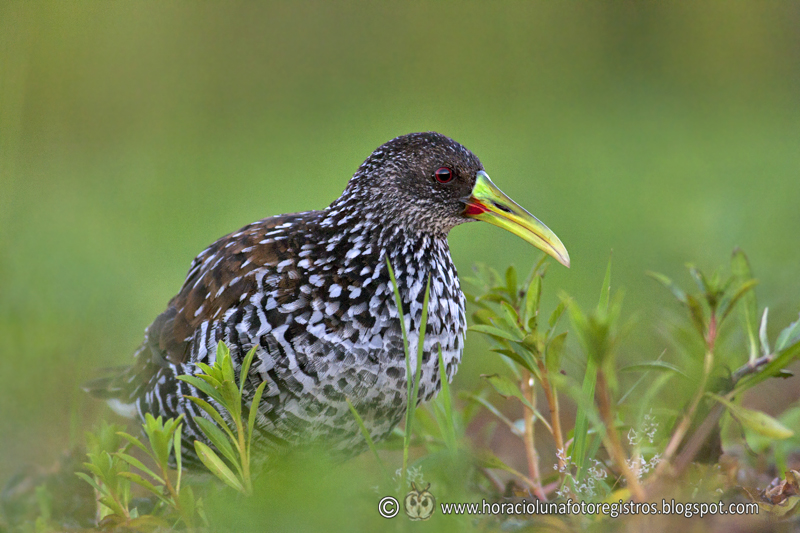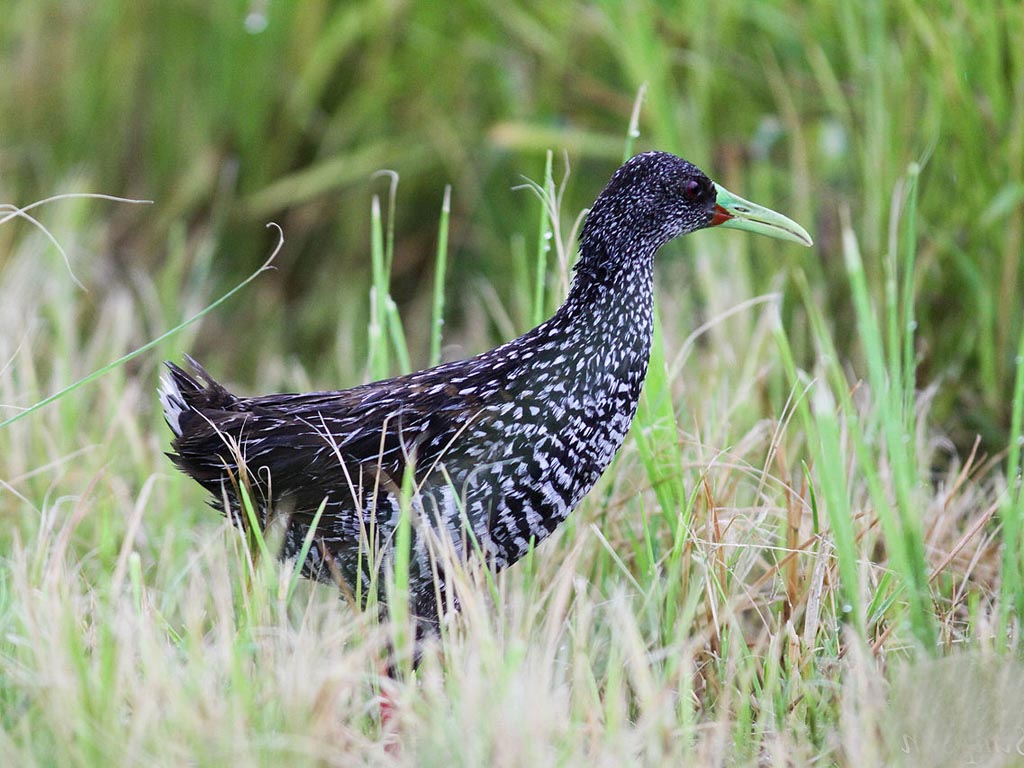
Pardirallus maculatus
SUBFAMILY
Rallinae
TAXONOMY
Rallus maculatus Boddaert, 1783, Cayenne, French Guiana.
Two subspecies recognized.
OTHER COMMON NAMES
French: Rаle tachetй; German: Fleckenralle, Spanish: Rascуn
Overo.
PHYSICAL CHARACTERISTICS
10–12.6 in (25–32 cm); 4.6–7.7 oz (130–219 g). Long-billed;
blackish brown, heavily streaked white on foreparts and barred
on flanks; undertail-coverts white; bill yellow-green with red
base. Juvenile duller; three morphs: dark morph (almost plain),
pale morph (pale underparts), and barred morph (barred underparts).
DISTRIBUTION
P. m. insolitus: Mexico to Costa Rica; P. m. maculatus: Cuba,
West Indies, and from Colombia and Ecuador to eastern Brazil
and northern Argentina.
HABITAT
Marshes, swamps, and wet grassland.
BEHAVIOR
Generally secretive. Gives a distinctive rasping screech
“g’reech” and gruff pumping notes. Territorial when breeding.
FEEDING ECOLOGY AND DIET
Invertebrates; also small fish and some plant material. Forages
in mud or shallow water.
REPRODUCTIVE BIOLOGY
Monogamous. Breeds mainly June through September. Nest a
cup of grass or rushes, low in marsh vegetation, often over water.
Eggs two to seven.
CONSERVATION STATUS
Not threatened, though poorly known and overlooked; may be
locally common.
SIGNIFICANCE TO HUMANS
None known.
Photo Gallery of - Spotted rail




 Animalia Life
Animalia Life